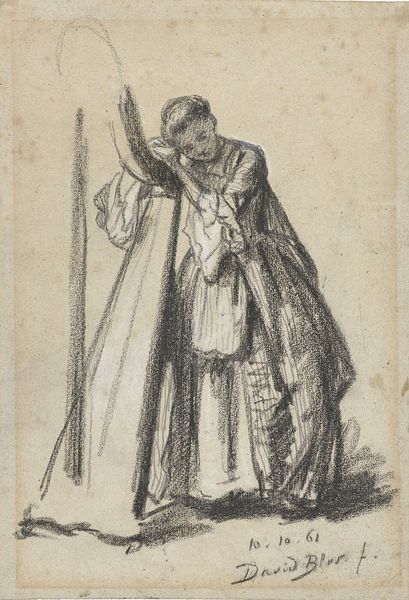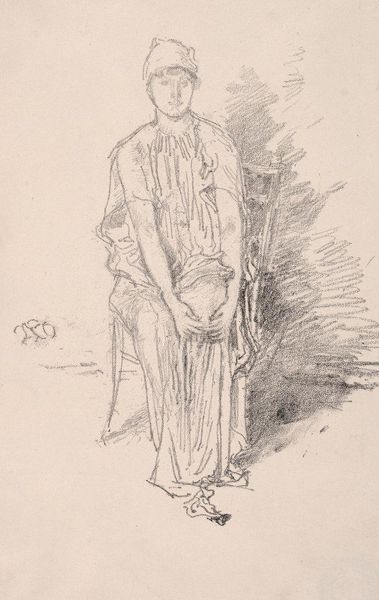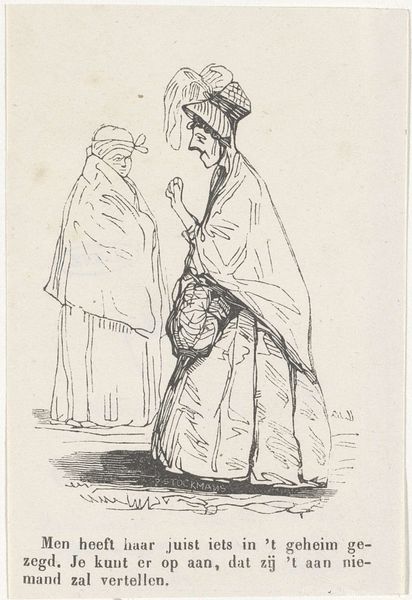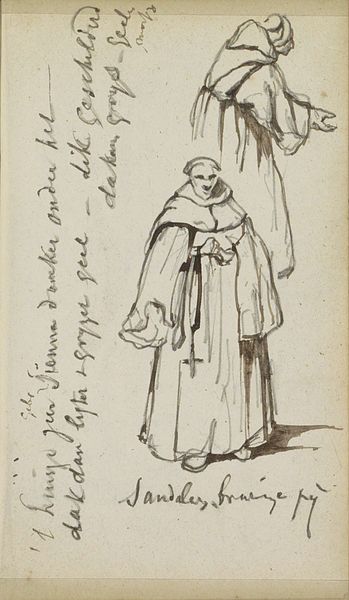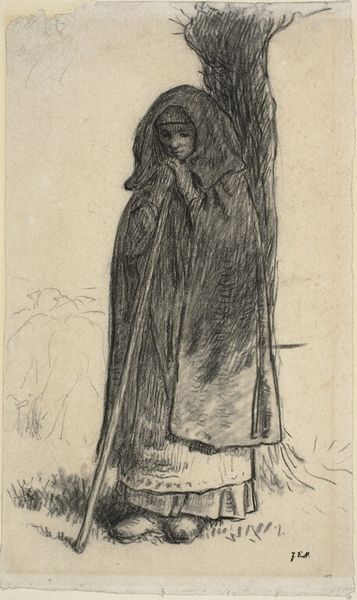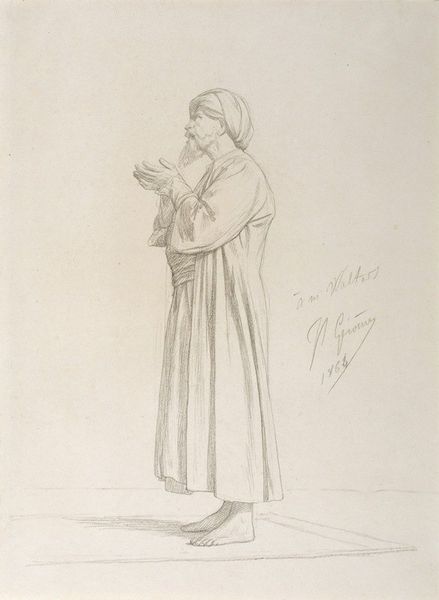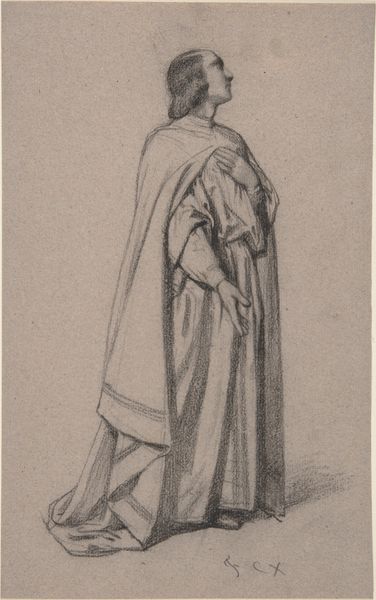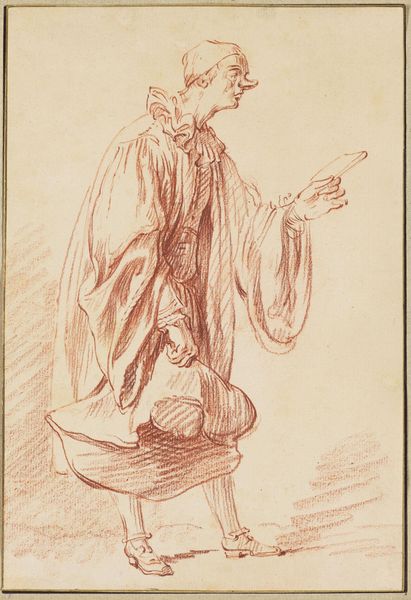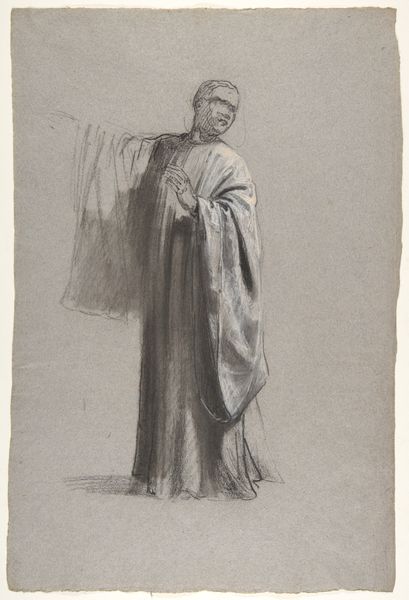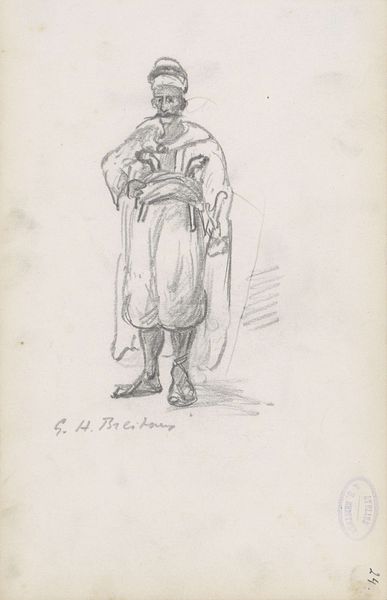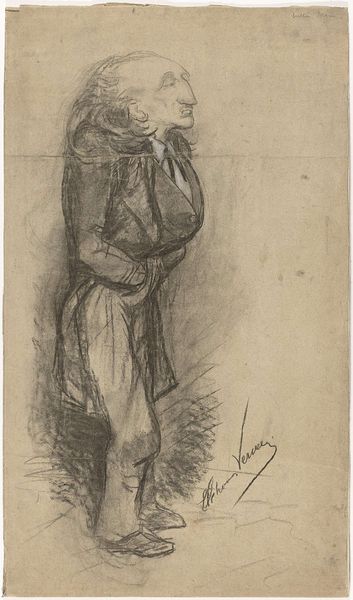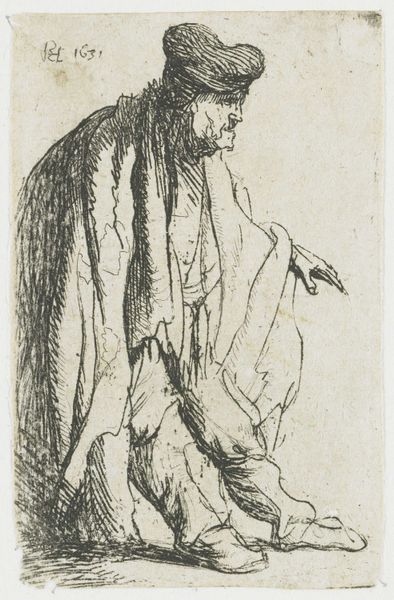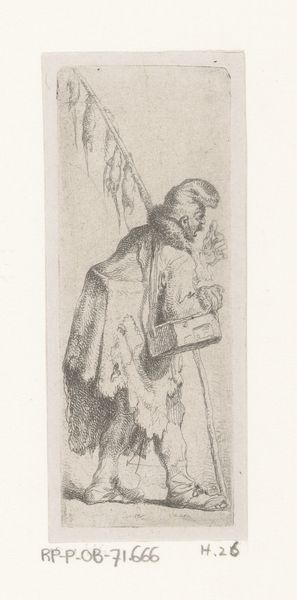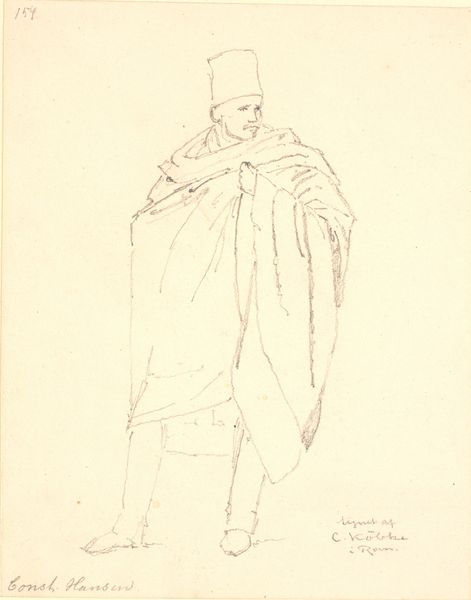
drawing, pencil
#
portrait
#
drawing
#
amateur sketch
#
light pencil work
#
pencil sketch
#
figuration
#
personal sketchbook
#
idea generation sketch
#
pen-ink sketch
#
pencil
#
sketchbook drawing
#
pencil work
#
fantasy sketch
#
realism
#
initial sketch
Dimensions: height 340 mm, width 220 mm
Copyright: Rijks Museum: Open Domain
Curator: Welcome. Here we have "Harpiste", a pencil drawing potentially created in 1861 by David Bles. It’s currently held here at the Rijksmuseum. Editor: The light pencil work creates an incredibly pensive mood. She looks exhausted, leaning on the harp, lost in thought. The amateur quality to the drawing feels quite intimate, like a private moment. Curator: Absolutely. We see in this seemingly simple sketch a number of themes converging. The harp itself, historically and symbolically, is tied to notions of femininity and refinement. We might consider how societal expectations weighed on women of the 19th century. Editor: The harp as a symbol has incredible depth, spanning mythology, religion, and cultural identity. Think of the celestial associations, angels often depicted with harps, linking the instrument to a higher spiritual realm. Then there’s the tragic trope of the “angel in the house,” burdened by domestic ideals. Do you see that reflected here? Curator: Precisely. One could also argue that her posture – slumped, almost defeated – subverts that ideal. The casualness of the sketch defies the perfected image of women frequently represented. What resonates strongly is the potential disparity between imposed roles and personal desires, where societal expectations clashed heavily with individual aspirations. The unfinished quality of the drawing only heightens this tension. Editor: I'm drawn to the way Bles used the pencil. The lines are deliberate but also soft, suggesting both structure and ethereality. This very medium also aligns with the historical accessibility and practicality of sketching within artists' personal spaces of experiment and reflection. Are there notes from his biography or of his other works that suggest this work mirrors his social commentary elsewhere? Curator: While concrete biographical links are challenging to establish conclusively in this particular sketch, Bles frequently explored themes of social commentary. This work could well fit with Bles' known tendencies to observe human form under social tension; consider, as well, that access to music and its accoutrements were economically restricted. Perhaps that itself speaks to the image of leisure. Editor: It certainly offers plenty to contemplate beyond the surface. Curator: Indeed. David Bles gives us more than just an image. It's a subtle yet compelling look at a moment caught in time, rich with possibilities, all emanating from the emotional core suggested.
Comments
No comments
Be the first to comment and join the conversation on the ultimate creative platform.
